Science Highlights, July 26, 2017
Awards and Recognition

















- Laboratory innovations chosen as R&D 100 Award Finalists
- Rangachary Mukundan named Electrochemical Society Fellow
- Cortney Kreller garners Electrochemical Society’s Wagner Award
- Nancy Jo Nicholas and Martyn Swinhoe receive INMM nuclear safeguards awards
- Herbert Van de Sompel honored with 2017 Paul Evan Peters Award
- Vamshi Chillara given Laboratory’s Postdoc Experimental Publication Prize
- Ray Newell wins the Richard P. Feynman Innovation Prize
- Antonio Redondo appointed Adjunct Professor
- Petr Chylek receives van de Hulst Award
- Brian Weaver elected Section Chair of the American Statistical Association
Capability Enhancement
Archiving and preserving historical radiochemical data
Trinity supercomputer partition merge increases classified computing capability
Materials Science and Technology
First NIF experiment with a double shell capsule target configuration
Awards and Recognition
Laboratory innovations chosen as R&D 100 Award Finalists
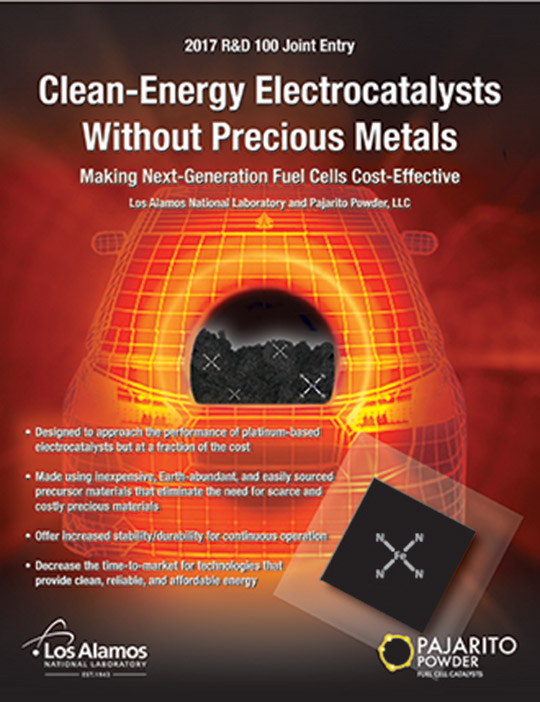
Eight Los Alamos National Laboratory innovations were selected as Finalists for the 2017 R&D 100 Awards, which honor the top 100 proven technological advances of the past year as determined by a panel selected by R&D Magazine. The Finalists, with projects covering energy, modeling and simulation, health, materials, and engineering, demonstrate the continued success of Laboratory researchers in technical innovation for national security science.
Clean-Energy Catalysts Without Precious Metals use inexpensive, Earth-abundant, and easily sourced precursor materials for the synthesis of electrocatalysts for hydrogen-based fuel cells. The fuel cells produce electrical energy and emit one byproduct: water. Conventional fuel cells rely on costly precious metal catalysts – such as platinum. The new precious-metal-free electrocatalysts generate performance approaching that of precious metal catalysts but at a fraction of the cost. Moreover, these new catalysts have a much higher tolerance to virtually all contaminants and impurities commonly present in the fuel cell hardware, hydrogen, and air feed stream. Potential applications include transportation, portable batteries, and stationary emergency backup power.
Los Alamos submitted the joint entry with Pajarito Powder, LLC based on technology that Pajarito Powder licensed from the Lab. Piotr Zelenay (Materials Synthesis and Integrated Devices, MPA-11) led the Los Alamos team of Hoon Taek Chung, Edward Holby, and Ulises Martinez. Pajarito Powder collaborators include Barr Zulevi, Alia Lubers, Geoff McCool, and Sam McKinney.
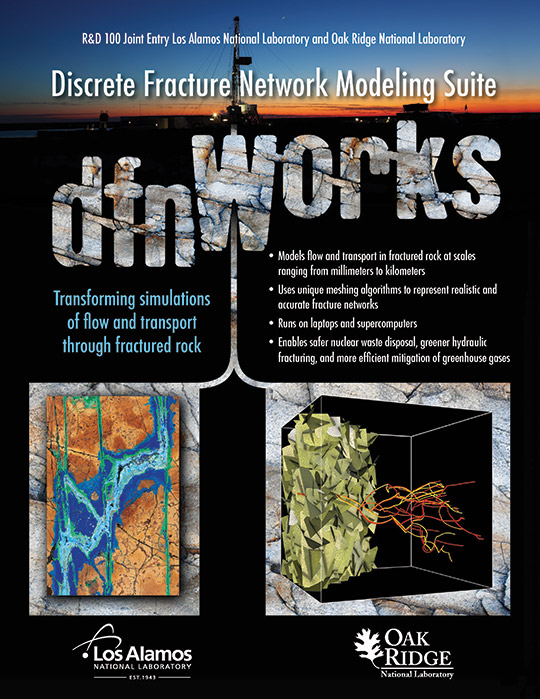
dfnWorks: Discrete Fracture Network Modeling Suite is a computational suite that simulates and predicts the flow and transport of fluids through underground fractured rock. It covers length scales that range from millimeters to kilometers, can run on computers as small as a laptop and as large as a supercomputer, and requires minimal effort to create representative models. Applications for dfnWorks include helping catch rogue nations performing clandestine underground nuclear tests, maximizing the extraction of natural gas, oil, and geothermal wells while minimizing environmental impacts; helping scientists design effective methods for effective carbon sequestration to slow the accumulation of greenhouse gases; and aiding the development of methods to ensure the safe disposal of nuclear waste in underground repositories.
Los Alamos submitted the joint entry with Oak Ridge National Laboratory. Carl Gable led the team of Jeffrey Hyman, Satish Karra, Nataliia Makedonska, and Hari Viswanathan (Computational Earth Science, EES-16). Scott Painter (Oak Ridge National Laboratory) collaborated.
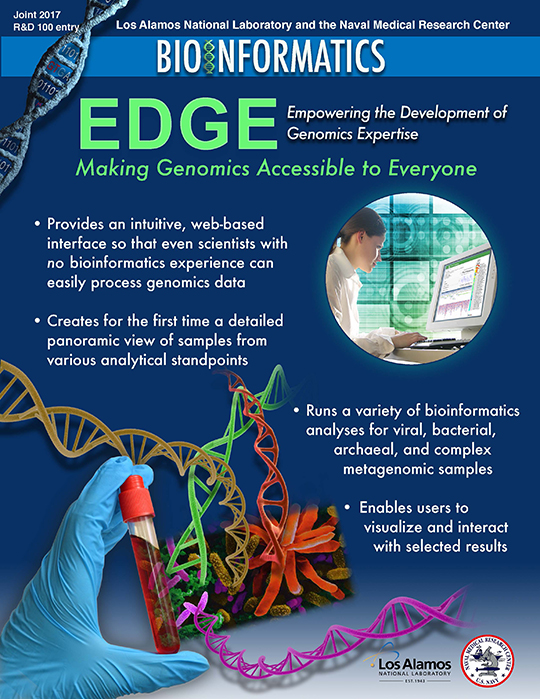
EDGE (Empowering the Development of Genomics Expertise) Bioinformatics “democratizes” the genomics revolution by enabling any researcher or physician to analyze complex genomics data quickly and easily. The intuitive, web-based platform can be applied to a wide variety of genome-sequencing samples ranging from individual isolates (from a culture of a single organism) to much more complex metagenomics (microbiome) projects. The platform addresses the problem of handling Big Data, without users having to possess bioinformatics expertise. EDGE brings the power of complex, big-data sequencing analysis to smaller research laboratories, including clinics, hospitals, universities, and remote sites.
Los Alamos submitted EDGE as a joint entry with the Naval Medical Research Center. Patrick Chain led the Los Alamos team of Po-E Li, Chien-Chi Lo, Karen Davenport, Yan Xu, Pavel Senin, and Migun Shakya (Biosecurity and Public Health, B-10). Collaborators at the Naval Medical Center include Theron Hamilton, Kimberly Bishop-Lilly, Joseph Anderson, Logan Voegtly, and Casandra Philipson.

High-Temperature Electric Submersible Pump Motor (HT-ESP) is rugged and reliable, offering improved thermal performance compared with conventional submersible pumps used in deep underground and extremely hot environments. Whether it’s drilling deeper for oil and gas reservoirs or tapping into geothermal resources of energy, today’s electric submersible pump motors must operate in some harsh, extremely hot environments. Current pump motors overheat and must be replaced often. Therefore, the Los Alamos/Chevron research team developed two technologies for HT-ESP to lower the internal operating temperature of the motor: 1) passive heat-transfer enhancements to the motor and 2) a bolt-on active onboard refrigerator. The HT-ESP motor provides operational reliability, thus extending the operational lifetime of motors working in deep underground and extremely hot environments. Moreover, the HT-ESP motor increases its operational range, enabling it to stay cool in higher temperature environments where conventional motors suffer from frequent failures associated with overheating.
Los Alamos submitted the High-Temperature Electric Submersible Pump Motor as a joint entry with Chevron Energy Technology Company. Todd Jankowski (Mechanical and Thermal Engineering, AET-1) led a Los Alamos team of Dallas Hill, Britton Lambson, James Stewart, Robert Bourque, and Coyne Prenger. Chevron collaborators include Jose Gamboa, Daniel Hunt, Max Bough, and Yamila Orrego.
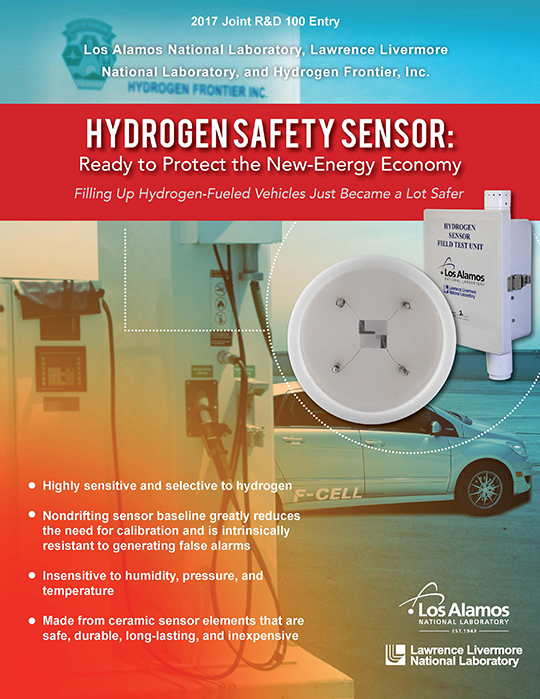
Hydrogen Safety Sensor makes filling up hydrogen-fueled vehicles a lot safer. Hydrogen gas is highly flammable, colorless, odorless, and propagates very quickly if released into the air. It is not possible to introduce odorants to detect the presence of hydrogen leaks because the chemicals used to create a foul warning odor would damage the catalysts and internal components of the vehicle’s fuel-cell stack. The Hydrogen Safety Sensor is made of safe, durable, and long-lasting ceramic sensor elements of the type used in automotive oxygen sensor technology. The safety sensors can be placed anywhere in the hydrogen supply chain, from hydrogen production and distributions to a critical component of the hydrogen “pump” at a filling station to a functioning safety component of the consumer product itself. Testing at Hydrogen Frontier filling stations has demonstrated that the sensors are highly sensitive and selective to hydrogen with no baseline drift or false alarms. All facets of the hydrogen economy, from transportation to hydrogen generators to off grid power sources, could benefit from the hydrogen safety sensors.
Los Alamos submitted the Hydrogen Safety Sensor as a joint entry with Lawrence Livermore National Laboratory and Hydrogen Frontier, Inc. Eric Brosha led the Los Alamos team of Christopher Romero, Rangachary Mukundan, and Cortney Kreller (Materials Synthesis and Integrated Devices, MPA-11). Collaborators include Amanda Wu and Robert Glass (Lawrence Livermore National Laboratory) and Daniel A. Poppe (Hydrogen Frontier, Inc.).
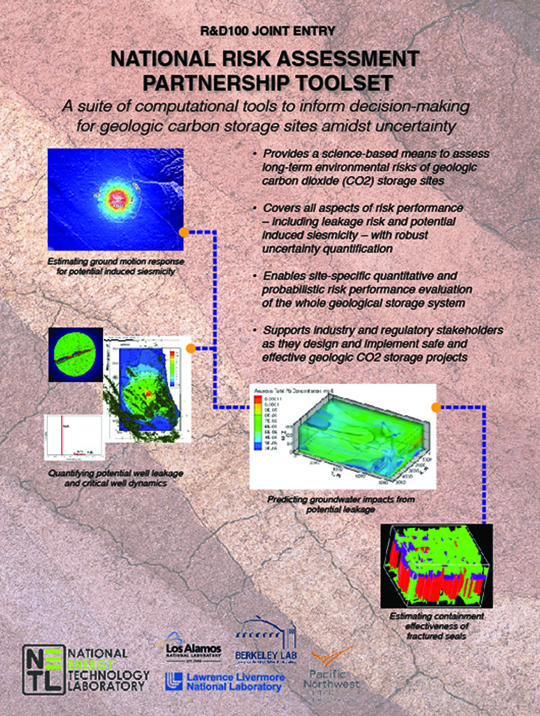
National Risk Assessment Partnership (NRAP) Toolset is a set of ten science-based computational tools developed to assess long-term environmental risks of geologic carbon dioxide (CO2) storage sites. This novel toolset is the only product suite that allows rapid, site-specific quantitative and probabilistic risk performance evaluation of the whole geological CO2 storage system – from storage reservoir to overlying groundwater and the atmosphere.
These tools support industry and regulatory stakeholders as they design and implement safe and effective geological CO2 storage projects to sequester large volumes of human-made CO2. Accessed by over 250 stakeholders from academia, regulatory agencies, and industry, the NRAP Toolset is now in use by the carbon storage community across the world, including projects in Asia and Australia.
The National Energy Technology Laboratory submitted the joint entry with Los Alamos National Laboratory, Lawrence Berkeley National Laboratory, Lawrence Livermore National Laboratory, and Pacific Northwest National Laboratory. Rajesh Pawar (Computational Earth Science, EES-16) led the Los Alamos team of Chris Bradley (Geophysics, EES-17), Elizabeth Keating, Phil Stauffer, Shaoping Chu, and Dylan Harp (EES-16); Richard Lee (Process Modeling and Analysis, AET-2); Bill Carey (Earth System Observations, EES-14); and George Guthrie (Earth and Environmental Sciences, EES-DO).
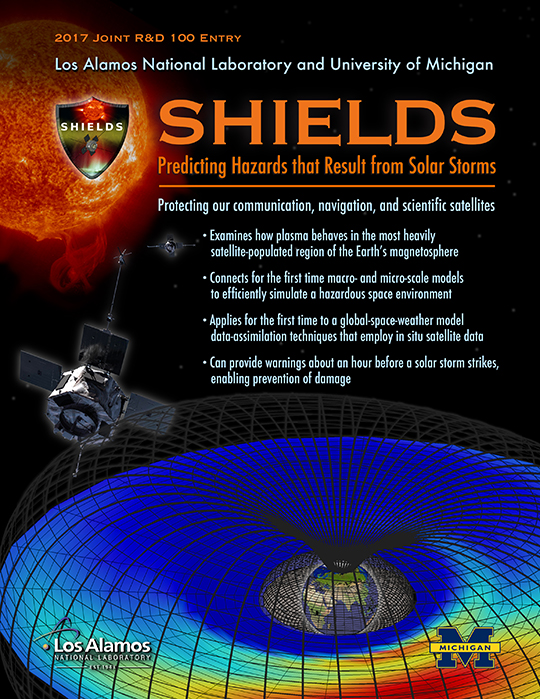
SHIELDS (Space Hazards Induced near Earth by Large, Dynamic Storms) protects communication, navigation, and scientific satellites orbiting the Earth’s magnetosphere by predicting hazards resulting from solar storms that cause “space weather”. The space weather could damage onboard electronics in satellites and thus interrupt radio and television reception, disrupt the operation of cellphones and GPS, shut down the Internet, and endanger military and civilian operations. Researchers developed the software platform to understand, model, and predict this weather about an hour before it hits satellites, enabling instruments to be placed in a safe mode. Multiscale modeling and satellite observational data create an end-to-end model of the magnetosphere driven by the dynamic solar wind. A thorough understanding of space weather and spacecraft charging is needed to strengthen spacecraft design and mitigate these hazards. One component of SHIELDS is already operational at the National Oceanic and Atmospheric Administration’s Space Weather Prediction Center to provide short-term forecasts and enable operations to prevent damage.
Los Alamos submitted SHIELDS as a joint entry with the University of Michigan. Vania Jordanova (Space Science and Applications, ISR-1) led the Los Alamos team of Gian Luca Delzanno, Humberto Godinez, J. David Moulton, and Daniil Svyatsky (Applied Mathematics and Plasma Physics, T-5); Michael Henderson, Steve Morley, Jesse Woodroffe, and Thiago Brito (ISR-1); Christopher Jeffery, Alin-Daniel Panaitescu, and Collin Meierbachtol (Space and Remote Sensing, ISR-2); Earl Lawrence (Statistical Sciences, CCS-6); and Louis Vernon (Applied Computer Science, CCS-7). University of Michigan collaborators included Gabor Toth, Daniel Welling, Yuxi Chen, and John Haiducek.
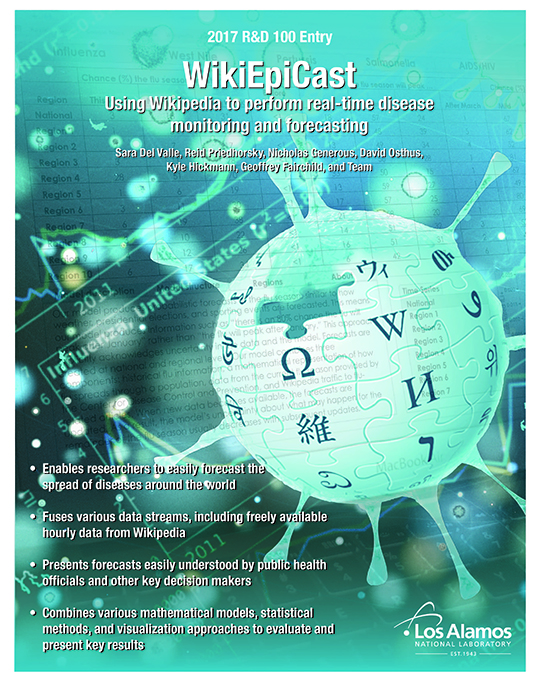
WikiEpiCast framework combines mathematical models with clinical surveillance data and readership traffic from Wikipedia to forecast the spread and severity of diseases around the world. Successfully demonstrated on forecasting influenza in the United States, WikiEpiCast’s framework can be applied to any communicable disease, from Ebola and tuberculosis to Zika virus. The tools being developed within WikiEpiCast present probabilistic forecasts, similar to how the nightly newscasts present weather updates. As a result, such forecasts are easy for nonscientist decision makers to digest and in turn make informed decisions that could save lives and potentially mitigate the potential impacts of an epidemic or pandemic of a burgeoning communicable disease.
Los Alamos submitted the WikiEpiCast entry. Sara del Valle (Information Systems and Modeling, A-1) led the team of Nicholas Generous and Geoffrey Fairchild (A-1), Kyle Hickmann (Verification and Analysis, XCP-8), Reid Priedhorsky (High Performance Computing Environments, HPC-ENV), and David Osthus (Statistical Sciences, CCS-6).
The prestigious “Oscars of Invention” honor the latest and best innovations and identify the top technology products of the past year. The R&D 100 Awards span industry, academia and government-sponsored research organizations. Since 1978 Los Alamos has won 137 of the prestigious R&D 100 Awards. The Laboratory’s discoveries, developments, advancements and inventions make the world a better and safer place, bolster national security and enhance national competitiveness. Technical contact: Janet Mercer-Smith
Rangachary Mukundan named Electrochemical Society Fellow
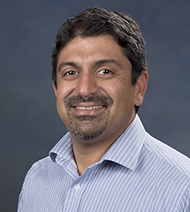
Rangachary Mukundan
Rangachary (Mukund) Mukundan (Materials Synthesis and Integrated Devices, MPA-11) was selected as a 2017 Electrochemical Society (ECS) Fellow. The distinction, granted to no more than 15 people annually, was established in 1989 to recognize advanced individual technological contributions in electrochemical and solid-state science and technology.
Mukundan’s research focuses on fuel cells, electrochemical gas sensors, and energy storage devices. He is a steering committee member for the Department of Energy’s Fuel Cell Consortium for Performance and Durability (FC-PAD), where he coordinates the thrust area Operando Evaluation—Benchmarking, Accelerated Stress Testing, and Contaminants. He is the co-inventor of six U.S. patents, has authored more than 125 papers, and is the principal investigator of a 2017 Los Alamos Laboratory-Directed Research and Development project titled “Flow Cells for Scalable Energy Conversion and Storage.”Mukundan has received the Electrochemical Society’s J.B Wagner Award of the High Temperature Materials Division and the Sensor Division Outstanding Achievement Award, the highest recognition the division can bestow on an ECS member. He is also the technical editor for ECS journals in the area of sensors and measurement sciences, and previously served on the Board of Directors and as chair of the Sensor Division.
He earned a PhD in materials science and engineering from the University of Pennsylvania, and joined the Lab in 1997 as a postdoctoral fellow. He became a staff scientist in 1999.
The Electrochemical Society is the world’s largest professional society for electrochemical science and applications. Mukundan will receive his award at its fall meeting in Washington, D.C. Technical contact: Rangachary (Mukund) Mukundan
Cortney Kreller garners Electrochemical Society’s Wagner Award
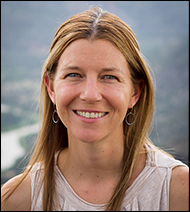
Cortney Kreller
Cortney Kreller (Materials Synthesis and Integrated Devices, MPA-11) was granted The Electrochemical Society’s High Temperature Materials (HTM) Division J. Bruce Wagner, Jr. Award. The award, established in 1998, recognizes a young ECS member who has shown exceptional promise for a successful career in science or technology in the high temperature materials field. Award criteria include a body of scientific or technical work deemed to have a significant positive and a long-lasting impact in high temperature materials.
Kreller earned a Ph.D. in chemical engineering from the University of Washington. Her graduate research focused on the measurement and modeling of nonlinear rate processes governing the performance of solid oxide fuel cell cathodes. She conducted postdoctoral work at Imperial College London prior to joining Los Alamos as a postdoctoral student in 2011.
Kreller’s research interests include electrochemical sensors, electrosynthesis of fuels, intermediate temperature fuel cells, and the interplay of crystalline disorder and ionic
transport. She has co-organized symposia at Electrochemical Society conferences and is a member-at-large of its High Temperature Materials Division.
As part of the award, which is named for a former ECS president, Kreller will deliver a keynote talk at an HTM-sponsored symposium. Past award recipients include MPA-11’s Rangachary Mukundan. The award is granted on odd-numbered years.
The Electrochemical Society is a U.S.-based professional association with more than 9,000 members in more than 75 countries. Its mission is to advance theory and practice at the forefront of electrochemical and solid-state science and technology, and allied subjects. Technical contact: Cortney Kreller
Nancy Jo Nicholas and Martyn Swinhoe receive INMM nuclear safeguards awards
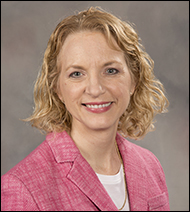
Nancy Jo Nicholas
The Institute of Nuclear Materials Management (INMM) has honored Nancy Jo Nicholas (Associate Director for Threat Identification and Response, ADTIR) and Martyn Swinhoe (Safeguards Science and Technology, NEN-1) for their contributions to the nuclear safeguards profession. The INMM is dedicated to the safe, secure and effective stewardship of nuclear materials and related technologies. Nuclear safeguards is the field devoted to keeping nuclear materials secure and ensuring they are used for peaceful purposes and not for the proliferation of nuclear weapons. Los Alamos National Laboratory is currently celebrating 50 years of work and world leadership in nuclear safeguards.
Nancy Jo Nicholas received the Edway R. Johnson Meritorious Service Award, named for a former INMM President and Technical Division Chair. The award recognizes individuals who have provided long-term, outstanding service to the Institute, as well as made noteworthy contributions to the nuclear materials management profession.
Nicholas earned a M.S. degree in nuclear physics from George Washington University and joined the Laboratory in 1990. Her technical field of expertise is in nondestructive assay measurement. Nicholas became as a technical leader in the fields of nonproliferation, arms control and treaty verification technology prior to moving into leadership positions. She also spent a year on assignment to the International Safeguards Division at DOE Headquarters and several years at the Los Alamos office at the Rocky Flats Environmental Technology Site. Today, she oversees an organization of 800 people dedicated to nuclear nonproliferation and other global security missions. Nicholas is a Fellow of the INMM.
Nicholas has served as INMM’s Vice President and President. She is a founding member and vice chair of the Board of Directors of the World Institute for Nuclear Security (WINS). WINS, based in Vienna, Austria, was founded to provide an international forum for those active in nuclear security to share and promote the implementation of best security practices around the world. Nicholas also serves on the Advisory Committee for the Nonproliferation Consortia at the University of Michigan. Technical contact: Nancy Jo Nicholas
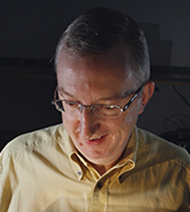
Martyn Swinhoe
Martyn Swinhoe received the Vincent J. DeVito Distinguished Service Award. The award, which is named for the Institute’s long- time Secretary, recognizes individuals who have made long-term, noteworthy contributions to the nuclear materials management profession. Eligible candidates are expected to be internationally recognized for their contributions to nuclear materials management.
Swinhoe received a PhD. in applied nuclear physics from the University of Birmingham, UK. He joined Los Alamos in 2002 for the Lab’s long-standing international safeguards mission. Much of his Laboratory work has focused on the development, implementation, and assurance of technical success for nuclear measurement systems in civilian nuclear fuel cycle facilities worldwide, primarily relating to non-proliferation safeguards. He has been involved with all the safeguards aspects of the nuclear fuel cycle, from the basic physics of detectors to the negotiation of the safeguards approach for nuclear facilities (the latter role as technical advisor to both the NNSA and the Department of State). Swinhoe pioneered the use of Monte Carlo Neutron Photon (MCNP) transport code to optimize instrument design and its use in enhancing the analysis of existing data sets to draw additional conclusions for nuclear materials management. He guided the Lab’s Monte Carlo N-Particle eXtended (MCNPX) team as they added neutron multiplicity capability into the code. He has more than 200 published articles covering a wide range of technical subjects related to safeguards and radiation detection. Technical contact: Martyn Swinhoe
Herbert Van de Sompel honored with 2017 Paul Evan Peters Award
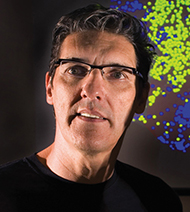
Herbert Van de Sompel
The Coalition for Networked Information (CNI), the Association of Research Libraries, and EDUCAUSE have selected Herbert Van de Sompel (Research Library, SRO-RL) to receive the Paul Evan Peters Award. The award recognizes notable, lasting achievements in the creation and innovative use of network-based information resources and services that advance scholarship and intellectual productivity.
Nominated by over a dozen highly respected members of the information science community, Van de Sompel is widely recognized as having created robust, scalable infrastructures that have had a profound and lasting impact on scholarly communication. The application of some of his groundbreaking work has become an integral part of the core technology infrastructure for thousands of libraries worldwide, helping to connect information across the Internet, and constantly working to further his dream of “a scholarly communication system that fully embraces the Web. Van de Sompel is known for his role developing protocols designed to expose data and make them accessible to other systems, forging links that connect related information, thereby enhancing, facilitating, and deepening the research process. These initiatives include the OpenURL framework (stemming from his earlier work on the SFX link resolver), as well as the Open Archives Initiative (OAI), which included the Protocol for Metadata Harvesting (OAI-PMH) and the Object Reuse and Exchange (OAI-ORE) scheme. Other contributions include the Memento protocol, which enables browsers to access earlier versions of the Web easily, and ResourceSync, which allows applications to remain synchronized with evolving content collections.
Van de Sompel received a PhD from Ghent University (Belgium), working on context-sensitive linking, which led to the OpenURL standard and library linking servers. Following stints at Cornell University and at the British Library, Van de Sompel joined Los Alamos as an information scientist in in 2002. He now leads the Prototyping Team at the Research Library and serves as visiting professor at the DANS data archive in the Netherlands. Van de Sompel served as a member of the European Union High Level Expert Group on Scientific Data, as well as the Core Experts Group for the Europeana Thematic Network, charged with building a digital repository of European cultural assets. He has won the Lab’s Fellows Prize for Outstanding Research and the SPARC Innovator Award by the Scholarly Publishing and Academic Resources Coalition (SPARC), of which he was the first recipient.
The Paul Evan Peters Award is named for CNI’s founding director. The award will be presented during the CNI membership meeting in Washington, DC in December Van de Sompel will deliver the Paul Evan Peters Memorial Lecture. The talk will be recorded and made available on CNI’s YouTube and Vimeo channels after the meeting concludes.
CNI is a coalition of some 240-member institutions dedicated to supporting the transformative promise of digital information technology for the advancement of scholarly communication and the enrichment of intellectual productivity. The Association of Research Libraries is a nonprofit organization of 123 research libraries in the US and Canada; its mission is to influence the changing environment of scholarly communication and the public policies that affect research libraries and the diverse communities they serve. A higher education technology association with more than 2,300 members, EDUCAUSE actively engages with colleges, universities, corporations, and other organizations to further the mission of higher education through the use of information technology. Technical contact: Herbert Van de Sompel
Vamshi Chillara given Laboratory’s Postdoc Experimental Publication Prize
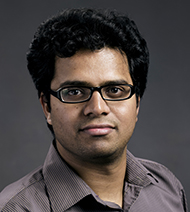
Vamshi Chillara
The Lab awarded the 2017 Postdoc Experimental Publication Prize to Postdoc Research Associate Vamshi Chillara (Materials Synthesis and Integrated Devices, MPA-11) for his paper entitled “Low Frequency Ultrasonic Bessel-Like Collimated Beam Generation From Radial Modes of Piezoelectric Transducers” published in Applied Physics Letters. The paper presents a very novel and simple method to produce an ultrasonic “Bessel beam”. Waves having the form of a Bessel beams are important due to their very low divergence, which greatly extends the range over which they can be used as diagnostic probes. Previously, ultrasonic Bessel beams could only be created with complicated and expensive parametric arrays of electrodes on a piezoelectric disk.
Chillara’s invention involves excitation of a piezo-disk with a carefully chosen single frequency and voltage combined with appropriately clamping the edges of the disk. This method is much simpler than the old technology, and it also offers greatly improved performance. Compared with the old approach, Chillara’s technique creates ultrasonic Bessel beams that are both 20 times stronger and much cleaner, greatly enhancing their performance in imaging applications. He first predicted the effect through theoretical modeling, and then validated it through experimental work. Chillara maintained a high level of independence conducting this research, from conception, through theoretical modeling and experimental work, to development of the manuscript. His two co-authors provided little more than equipment, mentoring, and editorial comments on the manuscript. According to recommender Cliff Lissenden of Penn State, “the paper has strong potential for large impact in acoustics because of the wide range of applications where collimated beams are desirable”, including “secure underwater communications, directed sound beams (e.g. for museum exhibits), any type of ultrasonic imaging (e.g., biomedical, oil exploration, nondestructive evaluation), and medical therapy.” His mentor, Dipen Sinha (MPA-11), nominated Vamshi for this prize. Technical contact: Mary Anne With
Ray Newell wins the Richard P. Feynman Innovation Prize
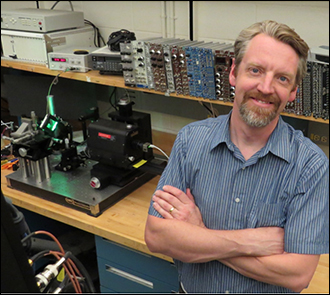
Ray Newell
Raymond (Ray) Newell, Quantum Communications team leader (Applied Modern Physics, P-21) won the Laboratory’s 2016 Richard P. Feynman Innovation Prize. The award recognizes his consistent scientific and technical leadership over the past several years commensurate with a senior technical leader at Los Alamos National Laboratory culminating with a significant commercialization success in the last year. The prize was awarded at the 2017 Los Alamos National Laboratory OutStanding InnOvation Celebration, held July 20.
The award is named in honor of scientist Richard P. Feynman, an early contributor to science crucial to the Manhattan Project. Feynman was defined by his creative approach to problem solving, unconventional perspective, and ability to communicate science to a broad audience. The Richard P. Feynman Innovation Prize is inspired and driven by this legacy, and aims to build a culture of innovation and spirit of entrepreneurship at Los Alamos. This year’s award celebrates entrepreneurs by recognizing a person or team who has transitioned a technology to market through a start-up company.
Newell has two patents, six patents pending, and eight invention disclosures, all within recent years. His intellectual property is being actively pursued in a commercial partnership, and in a field—quantum communications—promising substantial impact in nearly all levels of individual, financial, and national security communications.
Newell was lead principal investigator on a Cooperative Research and Development Agreement (CRADA) with Whitewood Encryption Systems, where he and his team moved a random number generator from theoretical concept to practical implementation. The Entropy Engine, a plug-and-play computer card encryption device that fits most network servers, uses phenomenon of light known as photon bunching that creates an almost perfectly random, digitized signal to provide an inexhaustible stream of random numbers for cryptosystems. The jointly developed technology won a 2016 R&D 100 Award and is now commercially available from Whitewood Encryption. Technical contact: Ray Newell
Antonio Redondo appointed Adjunct Professor
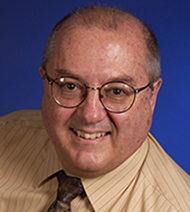
Antonio Redondo
The University of California, Davis appointed Antonio Redondo (Associate Directorate for Theory, Simulation and Computation, TSC) as Adjunct Professor, Step 3. His term began July 1, 2017 and will run through June 30, 2020 in the Department of Chemical Engineering.
As an Adjunct Professor, Redondo will teach and contribute to the scholarly and creative mission of University California, Davis. This includes participation in the activities of the Academic Federation, department, college, graduate group, campus, and system-wide committees. In addition to committees, other service activities include advising students, mentoring students or junior Academic Federation members, overseeing/sponsoring student activities, overseeing departmental equipment or facilities, and using his expertise to solve problems for the department or college/school.
Redondo received a Ph.D. in applied physics from the California Institute of Technology and joined Los Alamos as a technical staff member in the Electronics and Electrochemical Materials Devices Group. He was the Theoretical Division Leader from 2006 to 2015. Redondo is currently a senior scientist in TSC, where his research interests focus on modeling soft matter, biomaterials and biofuels using a combination of classical continuum and atomistic approaches. Technical contact: Antonio Redondo
Petr Chylek receives van de Hulst Award
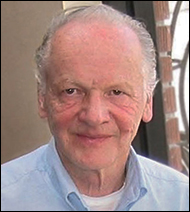
Petr Chylek
Petr Chylek (Earth System Observations, EES-14) has been honored with a 2017 van de Hulst Light-Scattering Award. Chylek received the award at the 16th Electromagnetic and Light Scattering Conference, held in College Park, Maryland.
Named after Dutch astronomer and mathematician Hendrik Christoffel “Henk” van de Hulst, this award celebrates the lifetime achievements of a scientist responsible for making landmark original contributions to the research field of electromagnetic scattering and its applications. The award is sponsored by Elsevier (a global information analytics company) and administered by the Editorial Board and Publisher of the Journal of Quantitative Spectroscopy and Radiative Transfer.
Chylek earned a Ph.D. degree in physics from the University of California in Riverside. He studied light-scattering theory during his postdoctoral fellowship at the National Center for Atmospheric Research. He considered atmospheric aerosols as a bridge between light-scattering theory and climate. One of his most cited early publications is “Aerosol and Climate,” published by Science in 1974.
Since Chylek joined the Lab in 2001, his research has shifted towards remote sensing and climate change. He is an expert in optical sciences, aerosol physics, atmospheric science, and climate change research. Chylek has organized the Santa Fe Conferences on Global and Regional Climate Change held at approximately five-year intervals. The fourth conference took place in February in Santa Fe, and the fifth conference is planned for 2022. Chylek is a Laboratory Fellow, as well as a fellow of the Optical Society of America and the American Geophysics Union. Technical contact: Petr Chylek
Brian Weaver elected Section Chair of the American Statistical Association
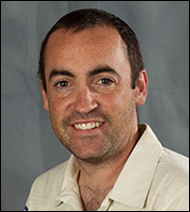
Brian Weaver
The Quality and Productivity section of the American Statistical Association (ASA) has named Brian Weaver (Statistical Sciences, CCS-6) as chair for the 2018 calendar year. Peers within the ASA select the chair-elect. The mission and goals of Quality and Productivity section is to promote quality and productivity through the development, teaching, and proper application of statistical thinking and tools and be the world class volunteer organization devoted to statistical thinking and the proper application of quality and productivity principles.
Weaver earned a Ph.D. in statistics at Iowa State University. He joined the Laboratory in 2011. Weaver applies statistical methodologies to weapons’ reliability, industrial hazards, safeguards, beyond Moore’s law computing, and space weather. Technical contact: Brian Weaver
Bioscience
Analysis of highly expressed small RNA in Yersinia pestis
Non-coding small RNAs (sRNAs) are found in practically all bacterial genomes and play important roles in regulating gene expression to impact bacterial metabolism, growth, and virulence. These small pieces of RNA modulate expression of specific genes by attenuating protein translation. A research team has published a paper in PLOS One that describes Ysr170, a sRNA expressed in the Yersinia pestis, the causative agent of plague.
The investigators aimed to identify sRNAs that may play an important role in pathogen virulence. The authors performed transcriptomics analysis to identify sRNAs that are highly expressed in Y. pestis that invaded a human macrophage cell line, compared with Y. pestis that remained extracellular. The team used ultra high-throughput sequencing to identify 37 novel and 143 previously known sRNAs in Y. pestis. One of the sRNAs, called Ysr170, was highly expressed in pathogen that infected the host. Gene knock-down of Ysr170 to decrease its expression in Y. pestis led to a significant decrease in the infection efficiency of Yersinia in cell culture, suggesting that Ysr170 plays a role in Yersinia virulence.
The team characterized the secondary structure of Ysr170 using a method called SHAPE (Selective 2′-hydroxyl acylation analyzed by primer extension). Similar to proteins, deciphering the three dimensional structure of sRNAs can provide insights into their functions. By using various antibiotics as model small molecules, the team applied structural homology modeling to show that the antibiotic gentamicin stabilizes a specific helix in Ysr170, which structurally resembles a natural target RNA of gentamicin in the cell. The authors suggest that novel small molecule therapeutics could be developed to specifically target bacterial sRNAs that play key roles in virulence. This would be a complementary strategy to the use of antibiotics that target other essential cell processes, such as DNA replication or cell wall structure.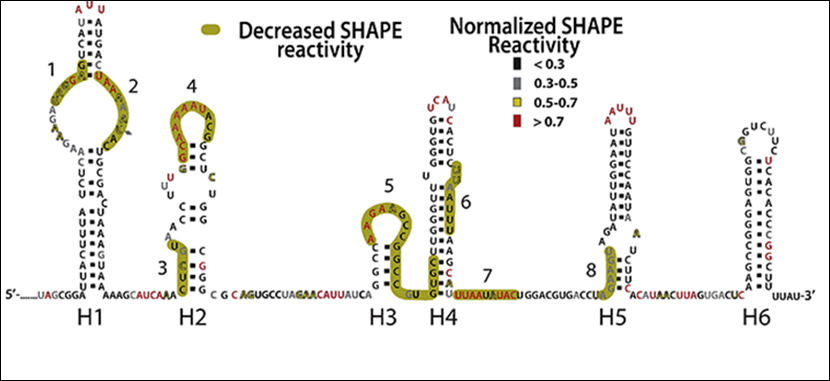
Secondary structure of the Ysr170 sRNA. Nucleotides with high SHAPE reactivity are shown in red and nucleotides with low reactivity are shown in black. Proposed secondary structure showing regions with reduced SHAPE reactivity in the presence of gentamycin is shown in gold.
Reference: “Functional and Structural Analysis of a Highly-Expressed Yersinia pestis Small RNA Following Infection of Cultured Macrophages,” PLoS ONE 11 (12): e0168915 (2016); doi: 10.1371/journal.pone.0168915. Authors: Nan Li (formerly Biosecurity and Public Health, B-10, currently Sichuan University), Scott P. Hennelly, Chang-Shung Tung, and Karissa Y. Sanbonmatsu (Theoretical Biology and Biophysics, T-6); Chris J. Stubben (formerly Bioenergy and Biome Sciences, B-11, currently University of Utah); Sofiya Micheva-Viteva, Yulin Shou, and Patrick S. Chain (B-10); Bin Hu (formerly B-11, currently SRA International); Momchilo Vuyisich (formerly B-11, currently Viome Inc); and Elizabeth Hong-Geller (Bioscience, B-DO).
Laboratory Directed Research and Development (LDRD) funded the work, which supports the Lab’s Global Security mission area and the Science of Signatures science pillar through the ability to detect mechanisms of pathogenicity. Technical contact: Elizabeth Hong-GellerCapability Enhancement
Archiving and preserving historical radiochemical data
The United States performed 1,054 nuclear tests from July 16, 1945 (Trinity Event) to September 23, 1992 (Julin Divider Event). Researchers collected and analyzed the debris from a majority of these tests for radiochemical signatures (i.e. actinides, fission products and activation products), which would be used to inform device performance. Modern simulations require this experimental data for validation. The simulations can then be used to certify the stockpile and in global security applications.
Researchers conducted radiochemical analyses of shot debris in facilities at TA-48. The documentation generated from these analyses fill hundreds of handwritten laboratory notebooks, thousands of office memoranda, thousands of reports, tens of thousands of radiation counter outputs, and tens of thousands of simulation outputs. These archives are maintained and used at the TA-48 Nuclear and Radiochemistry (C-NR) archive. Roughly 95% of the documentation is paper and 5% microfiche. The archive contains documents dating back to the Manhattan Project and the development of the Trinity device. The paper documents are susceptible to aging effects such as discoloration and the breakdown of ink. Starting a decade ago, the Lab made investments to begin digitizing the archive. Digitization both preserves the fragile documents and provides faster access and search capabilities.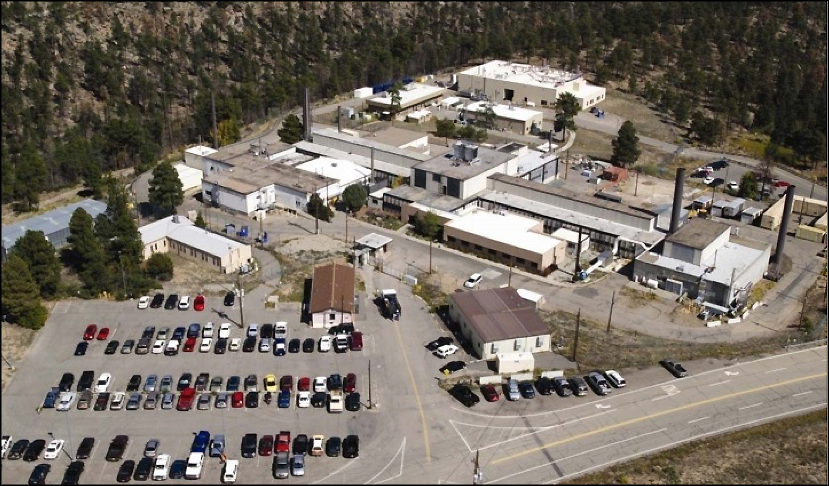
TA-48, the home of the C-NR archive and where the nuclear test debris was dissolved, separated, counted, and analyzed
Over the last five years, a digital archive platform has been developed that allows users to search the database and access the documentation easily. In the past it may have taken hours to locate a document, whereas now it takes seconds. The digital archive went live earlier this year. C-NR team members and collaborators use the archive for research and analysis. The team is continuing to digitize the archive and develop the database to include critical assembly measurements, reactor measurements, Van de Graff measurements, Davis Calibrations, Interlaboratory Calibrations, and other supporting research and measurements that were made during the U.S. test program.
The Data Validation and Archiving project, NNSA Verification and Validation of the Advanced Simulations and Computing (ASC) program led by Fred Wysocki funded the work, which supports the Lab’s Nuclear Deterrence mission area and the Nuclear and Particle Futures science pillar. Technical contact: August KeksisTrinity supercomputer partition merge increases classified computing capability
The Trinity supercomputer’s two partitions sited at the Lab’s Nicholas Metropolis Center for Modeling and Simulation were merged recently. Both the Xeon Haswell and the Xeon Phi Knights Landing (KNL) processors are now available for production computing in the Laboratory’s classified network. Trinity has provided service for the NNSA’s Stockpile Stewardship Program since the summer of 2016 and has been dramatically expanded to provide almost 680,000 advanced technology KNL processors as a key part of NNSA’s overall Advanced Simulation and Computing (ASC) Program. According to ASC Director Bill Archer, the merge has created one of the most capable supercomputers in the world for the NNSA Stockpile Stewardship Program. The merge enables Trinity to support unprecedented calculations that will directly sustain the mission of the national nuclear security laboratories.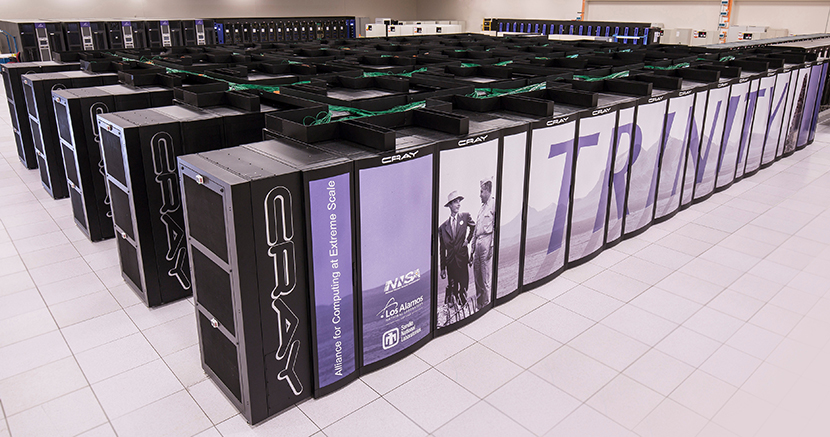
Trinity supercomputer
The Knights Landing processors were accepted for use in December 2016. Since then they have been used for open science work in the unclassified network, permitting nearly unprecedented large-scale science simulations. The open science period enabled scientists to find and fix any remaining issues with the system hardware and software before the Knights Landing partition was turned over for production computing in the classified environment. Knights Landing is a multicore processor that has 68 compute cores on one piece of silicon, called a die. This allows for improved electrical efficiency that is vital for getting to exascale, the next frontier of supercomputing, and is three times as power-efficient as the Haswell processors.
In June of 2017, the Alliance for Computing at Extreme Scale (ACES) team took the classified Trinity-Haswell system down, as planned, and merged the existing Xeon processors (Haswell) partition with the Xeon Phi processors (Knights Landing) partition. The system was back up for production use the first week of July.
Materials Physics and Applications
Using light to align magnetic atoms in colloidal nanocrystals
Advances in the synthesis of magnetically-doped nanomaterials have sparked a renewed focus on low-dimensional magnetic semiconductors, which have interesting magnetic properties that can be greatly enhanced by strong quantum confinement. The extent to which quantum confinement can enhance the spin interactions between carriers (electrons and holes) and embedded magnetic has been studied in a variety of semiconductor nanostructures, including magnetically-doped nanoribbons, nanoplatelets, epitaxial quantum dots, and colloidal nanocrystals. Low-dimensional magnetic semiconductors have potential applications in optically- or electrically-addressable magnetic data storage.
Los Alamos scientists and collaborators demonstrated the use of an optical technique known as resonant photoluminescence (resonant PL) to reveal the formation of “magnetic polarons” in cadmium selenide (CdSe) nanocrystals doped with magnetic manganese (Mn2+) ions. A magnetic polaron forms when a single electron-hole pair (an exciton) causes the spontaneous ferromagnetic alignment of all the embedded Mn2+ spins in the nanocrystal – even in the absence of any applied magnetic field. The formation energy of the magnetic polaron can be directly revealed by the small energy shift between a pump laser (which creates the exciton) and the energy of the photons that are emitted by the excitons after the magnetic polaron has formed.
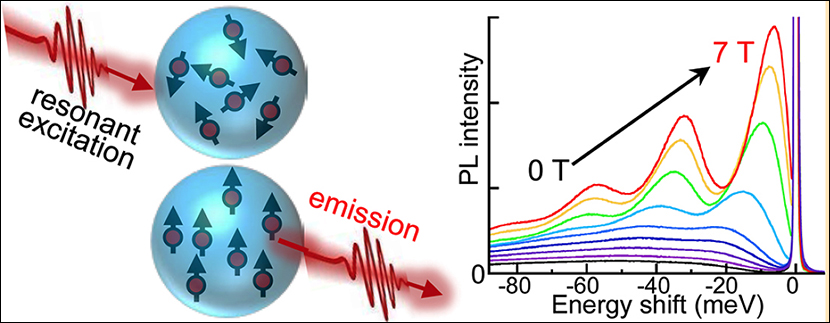
The illustration depicts the formation of magnetic polarons in Mn-doped CdSe nanocrystals. Initially, the Mn2+ spins are randomly oriented. After the resonant pump laser photoexcites a single exciton, the exciton causes all the Mn2+ spins to ferromagnetically and spontaneously align. This lowers the exciton’s energy. Therefore, when the exciton recombines, it emits a photon with slightly lower energy. The energy shift between the pump and emission energy reveals the polaron formation energy. The plot on the right shows how the resonant PL evolves with applied magnetic field.
By studying these energy shifts as a function of both temperature and applied magnetic field, the team inferred the strength of the microscopic magnetic interaction between the exciton and the embedded Mn2+ ions: about 10 tesla, in good agreement with theoretical estimates. Moreover, the detailed line shape of the resonant PL spectra provided direct insight into the statistical fluctuations of the Mn2+ spins. Their work highlighted the utility of resonant photoluminescence as an effective tool for detailed studies of collective magnetic phenomena in colloidal nanomaterials.
Reference: “Direct Measurements of Magnetic Polarons in Cd1−xMnxSe Nanocrystals from Resonant Photoluminescence,” Nano Letters 17, 3068 (2017); doi: 10.1021/acs.nanolett.7b00421. Researchers: W. D. Rice (former postdoctoral researcher in Condensed Matter and Magnet Science, MPA-CMMS-NHMFL, currently University of Wyoming), W. Liu (former postdoctoral researcher in Physical Chemistry and Applied Spectroscopy, C-PCS, now at Nanosys Inc.), V. I. Klimov (C-PCS), V. Pinchetti (Università degli Studi di Milano-Bicocca, Italy), D. R. Yakovlev (Technische Universität Dortmund, Germany, and Russian Academy of Sciences, Russia), and S. A. Crooker (MPA-CMMS-NHMFL).
The work supports the Laboratory’s Energy Security mission area and the Materials for the Future science pillar via studies of materials for energy and magnetic data storage applications. The Office of Chemical Sciences, Biosciences, and Geosciences of the DOE Office of Basic Energy Sciences funded Klimov, Crooker, and Liu. The Laboratory Directed Research and Development (LDRD) program funded Rice as a Director’s Postdoctoral Fellow. Researchers performed the optical measurements at the National High Magnetic Field Laboratory – Pulsed Field Facility, which the National Science Foundation funds. Technical contact: S. Crooker
Materials Science and Technology
First NIF experiment with a double shell capsule target configuration
Los Alamos scientists completed the first experiment with a double shell capsule target shot on the National Ignition Facility (NIF) at Lawrence Livermore National Laboratory. The goal of the NIF, located at Lawrence Livermore National Laboratory, is to focus the intense energy of 192 laser beams on a millimeter-sized spherical target filled with hydrogen fuel, fusing the hydrogen atoms’ nuclei and potentially releasing many times more energy than it took to initiate the fusion reaction. Fusion ignition holds the promise of producing immense, abundant energy.
This experiment was the initial laser shot in the second experimental phase of Los Alamos’s Double Shell campaign, intended to examine the dynamics of the inner and outer shell interaction, which is part of the greater quest to achieve fusion ignition in the laboratory.
Researchers in Engineered Materials (MST-7) fabricated the double shell, which offers an alternative path to ignition on the NIF compared with conventional single shell target designs. The double shell design holds promise because it allows the driver radiation used to compress the target to ignition to be trapped by the high Z inner shell. Radiation can be lost in a single shell design. Double shells could use a much simpler pulse laser shape than single shell platforms and are predicted to ignite and burn at relatively low temperatures. The experiment examined shape transfer from the outer to the inner shell during the implosion. The double shell capsule consisted of an aluminum outer shell assembled from two hemi-shells, the first aluminum ablator used on NIF, a low-density (38 mg/cc) plastic foam cushion, and a glass inner shell with a plastic tamper.
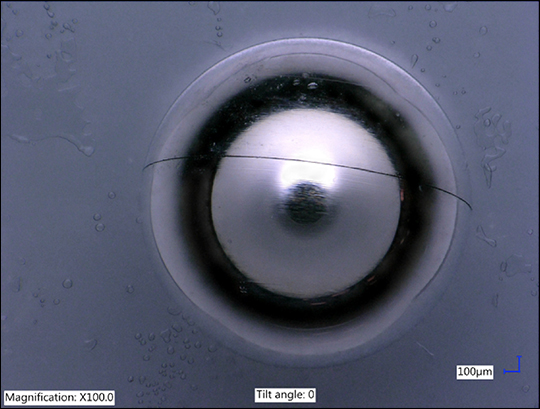
A 100X-magnification high resolution picture of the double shell capsule.
This experiment also tested the ability to image a double shell with current NIF diagnostic capability, both through the use of a mid-Z material inner shell (“imaging” design) instead of a high-Z material and using the first test of a zirconium backlighter (greater than 10 keV) with a NIF 2-D convergent ablator (ConA) platform.
The imaging platform was a success, with the images of the inner shell implosion showing very good signal. Researchers captured images of the inner shell pre-impact to measure a baseline for their backlighter performance and characterize the presence of the joint in the outer shell, which they also observe in the late-time implosion images. The team obtained high-quality images of the outer-shell shape after impact and with high enough contrast in the images to distinguish some post-impact inner shell features as well. Thus, the initial test of the aluminum ablator showed low backscatter, making it feasible for future experiments.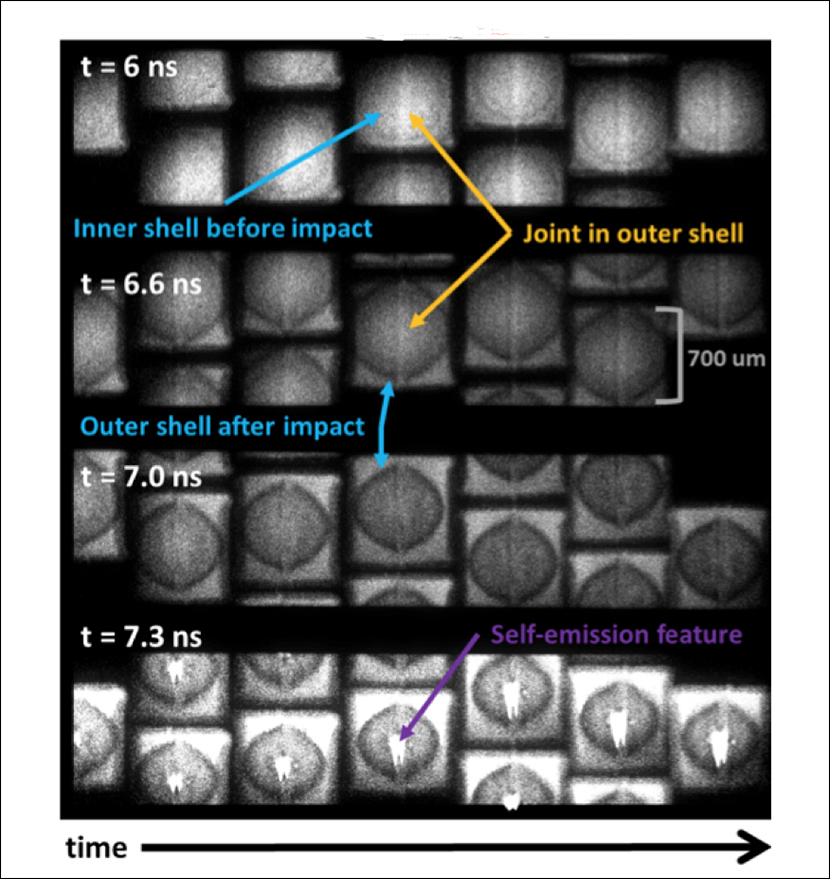
Backlit images of the capsule implosion. The top strip shows the inner shell before impact of the outer shell, while the bottom three strips show the outer and inner shell post-impact. The outer shell joint is visible in the first two strips.
Los Alamos researchers include Principle Investigator Eric Loomis (Plasma Physics, P-24) and Target Engineer Tana Cardenas (Engineered Materials, MST-7). The NNSA Inertial Confinement Fusion program (Campaign 10) funded the research, which supports the Laboratory’s Energy Security and Nuclear Deterrence mission areas and the Science of Signatures science pillars. Technical contact: Tana Cardenas
Physics
Searching for dark photons with the SeaQuest spectrometer
With the recent discovery of Higgs particles at the Large Hadron Collider, researchers have completed the particle table of the Standard Model. However, the Standard Model might not be the complete story. It fails to account for some key properties of the observed universe, such as dark matter and dark energy. Ordinary matter makes up only about 5% of the universe. The rest is dark matter (approximately 25%) and dark energy (approximately 70%). Dark matter particles do not appear to interact with ordinary matter via most known forces. However, they could interact weakly via some new mediator particle, such as a postulated dark photon. If such a particle exists, it might be detectable in high-energy particle experiments. According to dark matter phenomenological models, the mass of a dark photon is likely to be between 1 MeV/c2 and 10 GeV/c2.
The SeaQuest experiment at Fermi National Accelerator Laboratory (Fermilab) was designed to study the quark and anti-quark structure of the nucleon and its modification inside nuclei. This experiment uses the high intensity 120-GeV/c proton beam from the Fermilab main injector, impacting on various target nuclei.
A team from Subatomic Physics (P-25) realized that this experiment’s configuration could be used to search for dark matter mediators. A relatively small addition to the hardware and electronics would enable the experiment to become sensitive to dark photons in the proposed mass range. This additional capability was given its own experiment number: Fermilab E1067.
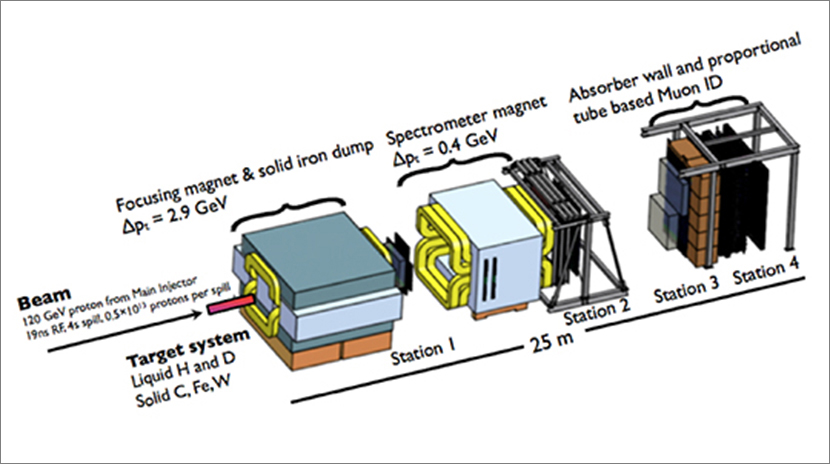
The SeaQuest spectrometer
Los Alamos researchers proposed a modest upgrade of the existing Fermilab E906 experiment to allow the trigger to identify dark photon events. Initial studies showed that two fast, position-sensitive detectors located near the SeaQuest tracking stations 1 and 2 could be used to trigger selectively on dark photon decays inside the beam dump and reject the background of muons created near the target. The team identified extruded plastic scintillators, read out using wavelength-shifting fibers and silicon photomultipliers, as an appropriate technology for these detectors. Such detectors are robust and cost-effective compared with previous scintillator technologies, and have vastly superior position resolution. The Los Alamos team designed and built the detectors, power distribution and control boards, trigger logic boards, and calibration system and commissioned them at Fermilab. The Lab also developed a field-programmable gate array trigger algorithm to process the detector hit patterns.
Data collection with the ongoing SeaQuest experiment will continue through the summer of 2017, when the SeaQuest experiment will switch to a new program with a polarized proton target designed and built by the same Los Alamos group (experiment E1039). The E1039 data collection will continue for two more years to further improve sensitivity. Based on the current beam condition at SeaQuest, researchers expect to see about 1018 protons on target in two years.
The Laboratory Directed Research and Development (LDRD) program funded the work, which supports the Lab’s Energy Security mission area and its Nuclear and Particle Futures science pillar by broadening the Lab’s Nuclear and Particle Physics, Astrophysics and Cosmology (NPAC) capability. The fundamental science of this project is of DOE Office of Science priority, highlighted as one of five science drivers identified by a subpanel of the High Energy Physics Advisory Panel. Los Alamos researchers include Ming Liu, Kun Liu, Hubert van Hecke, Pat McGaughey, Sho Uemura, Sanghoon Lim, Xuan Li, and Alexander Wickes (P-25). The Fermilab E906 experiment includes a total of about 60 researchers from Abilene Christian University, Argonne National Laboratory, University of Colorado, Fermilab, University of Illinois, LANL, University of Maryland, University of Michigan, University of New Mexico, Rutgers University, Jefferson Laboratory, Japan, and Taiwan. Technical contact: Ming Liu and Sanghoon LimSigma
Nanoindentation explains plasticity and shear stress for fragile molecular crystals
Los Alamos and Purdue University researchers used nanoindentation (indentation hardness tests applied to small volumes) to uncover new insights into the plasticity of organic molecular crystals. Molecular crystals are a broad category of materials that include energetics, foods, nonlinear optics, and pharmaceuticals. Understanding deformation in these crystals could lead to improved energetic materials and pharmaceuticals. The Journal of Materials Research featured their study on the journal cover.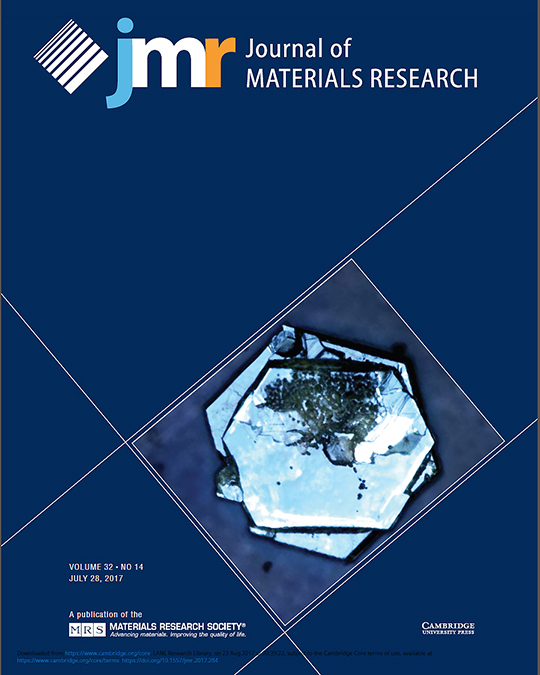
Figure. The cover of the Journal of Materials Research. The image is an optical microscopy image of the energetic material TATB after surface layer removal.
The researchers aimed to quantify the mechanical properties of a selection of pharmaceutical and energetic molecular crystals with minimal processing. The goal was to broadly define the window of plasticity for multiple molecular crystal structures and determine if the onset of plasticity in these materials is particularly sensitive to structure. Demonstrating the utility and accuracy of the nanoindentation technique on materials for which data can be compared to accepted measurements using minimally processed samples provides a method to obtain properties for which no experimental data has previously been available. Their results provide guidance for mechanical models of tableting, machining, and property assessment for molecular crystals.
Most molecular crystals have noncubic structures. The formability of powders into tablets is often evaluated using qualitative or semiquantitative mechanical properties such as compactibility and brittleness, which are related to industrial processes like comminution (reduction to minute particles). Understanding these materials’ quantifiable mechanical properties is important for engineering molecules for optimal performance, but such measurements are difficult to make for low-symmetry, fragile molecular crystals.
The team used nanoindentation to assess elastic and plastic properties of representative monoclinic, orthorhombic, and triclinic molecular sub-mm crystalline structures. The research determined that the variation in modulus due to in-plane rotational orientation is about equal to the variation of a given crystal at a fixed orientation. The onset of plasticity occurred consistently at shear stresses between 1-5% of the elastic modulus in all three crystal systems, and the hardness to modulus ratio suggested that conventional Berkovich tips (a three-sided pyramid which is geometrically self-similar) do not generate fully self-similar plastic zones in these materials.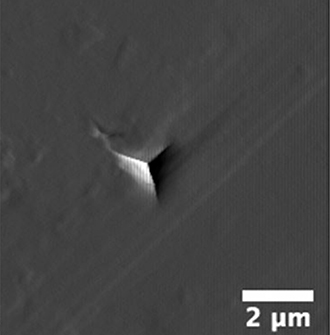
Figure. Representative atomic force microscope gradient residual indent impression of indent in the energetic material HMX showing no signs of surface cracks.
Plastic deformation in organic crystalline compounds is far-reaching in terms of downstream processing and ultimately performance in energetic and pharmaceutical applications. Mechanical stresses applied during processes (e.g., milling and compaction) can lead to changes in dissolution or thermomechanical behavior. Assessing the properties of small powders of molecular crystals in their as-produced form helps explain ambiguous properties while providing microstructure-based insight to performance differences where defects such as dislocations could be present. Understanding the behaviors of as-produced materials is fundamental to predicting responses of real materials from mesoscale understanding. The meso-scale, or the “middle” length scale, is often critical to controlling the performance of materials. These crystals, in the form tested, are exactly what are formulated into pharmaceutical tablets and plastic-bonded explosives. This fundamental research into the mechanics and fundamental properties of materials can lead to materials with altered properties that respond differently, thereby achieving controlled functionality, a central vision of the Laboratory’s Materials Strategy.
Reference: “The Mechanical Properties of as-grown Noncubic Organic Molecular Crystals Assessed by Nanoindentation,” Journal of Materials Research 14, 2728 (2017); doi: 10.1557/jmr.2017.219. Authors: Matthew R. Taw, Teresa M. Carvajal, and David F. Bahr (Purdue University); John D. Yeager (High Explosives Science and Technology, M-7), and Daniel E. Hooks (Sigma Division, SIGMA-DO).
NNSA Campaign 2 (Dana Dattelbaum, Program Manager) funded the Los Alamos work, which supports the Lab’s Nuclear Deterrence and Global Security mission areas and the Materials for the Future science pillar. The explosive crystals used in the study were grown at the Laboratory. Technical contact: Dan Hooks




